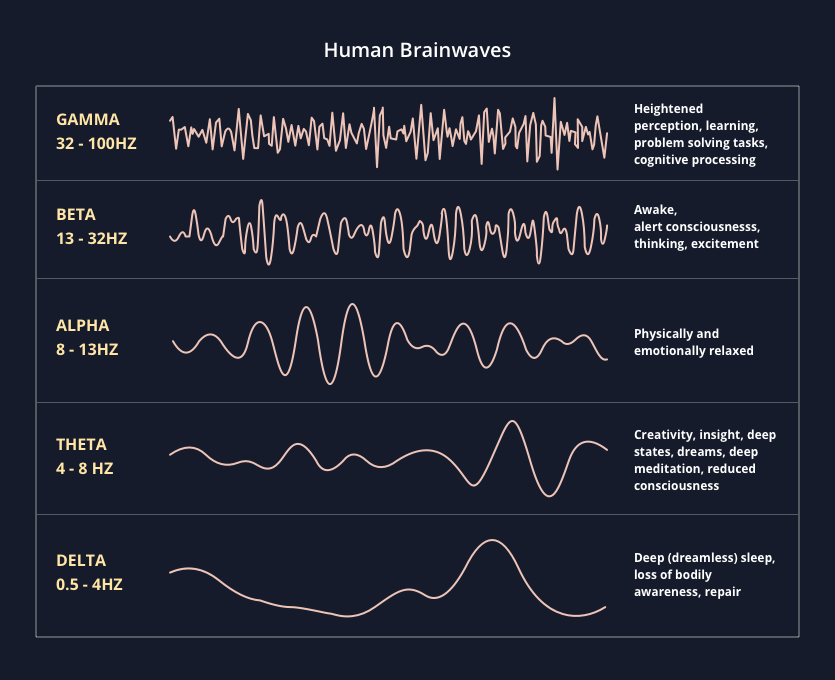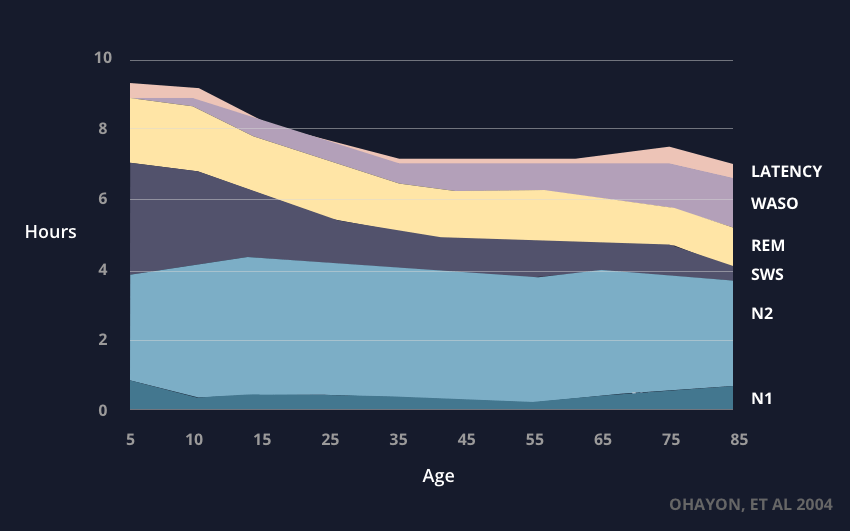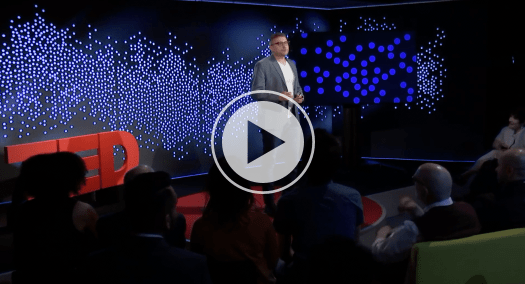Deep Sleep Guide
Top Hacks for Deeper Sleep: Tried and True Practices for More Restorative Sleep
By Dr. Dan Gartenberg
Last Updated: March 30, 2023
By Dr. Dan Gartenberg
Last Updated: March 30, 2023
Deep Sleep Overview
Before we give you the deep sleep guide, it's important to understand deep sleep. Deep sleep is the most restorative stage in the sleep cycle. In this stage, our brainwaves become dramatically longer, and our daily experiences are turned into long-term memory. Deep sleep is vital to feeling rejuvenated and learning effectively; without deep sleep, it is difficult to effectively learn and process information. Deep sleep is vital, but it can be difficult to achieve.

As we sleep, we spend less and less time in deep sleep. In the beginning of the night, it is common to spend up to 50% of the first sleep cycle in deep sleep. By the end of the night, we only spend around 2% of the sleep cycle in deep sleep. As we age, our bodies tend to spend less time in deep sleep per sleep cycle. This is why sleep can feel less rejuvenating the older we get, even if we sleep for the same amount of time.

10-Step Deep Sleep Guide
1) Get more sleep
As this consensus report indicates, adults needs 7-9 hours on a regular basis and not enough sleep has the biggest evidence of health and memory effects compared to other sleep stats. This is total sleep amount, not time in bed. So if you are spending 7.5 hours in bed and are asleep about 90% of the time, which is considered healthy, you are typically getting only around 7 hours of sleep. If you want optimum energy and you sleep around 7 hours, there is a good chance you aren’t getting enough. One thing to try is a 20 min power nap or to slightly move back your bedtime.
2) Use SleepSpace
SleepSpace is designed to block disruptive noises, help you relax, and to measure sleep quality. Try the nature sounds wind down 10 mins before your bedtime to further prepare your brain for sleep. When you have trouble falling asleep, try the Progressive Muscle Relaxation, Yoga Nidra, Diaphragmatic Breathing or other sounds to relax in SleepSpace. Ideally, do this outside of your bedroom (but it's not critical). Remember, we are trying to associate your bed with sleep only. You can also connect SleepSpace to smart lights and schedule them to change at your ideal bedtime. SleepSpace also includes vibration biofeedback designed for relaxation (Apple Watch required).
3) Control your light and temperature
Technically, we should never get blue light at night - it should all be red. You can use the TrueDark glasses to entrench your circadian rhythm and block blue light close to bedtime. You can further augment this with LIFX bulbs, setting them up to emit dim light at night. Black-out blinds are super important or you can try a simple eye-mask solution like this one. Also, cool your room before bed. A cold room (around 68 degrees) can help you fall asleep faster.
Everyone should get at least 30 minutes of light exposure every day before noon, ideally, in the first hour of waking up. Going for a morning walk will do the trick. This helps entrench your circadian rhythm and improve your sleep quality. We also suggest the Verilux lamp – or any other 10000 lux lamp to give your body light cues. You can even put this on your desk while you work in the mornings.
Try not wearing sunglasses! It’s a small but helpful hack to give the photoreceptors in your eyes more light. Alternatively, look towards the sun for a few minutes every day.
4) Have the right mindset for sleep
An important part of our deep sleep guide is having the right mindset for sleep. Check out this recent podcast by Andrew Huberman that breaks down how to think about sleep.
Here is Andrews sleep supplement routine:
1. 50 milligrams of apigenin
2. 400 milligrams of magnesium threonate, or biglycinate
3. 200 to 400 milligrams of theanine
4. 1g glycine
5) Go in the sauna or bath
Elevating body temperature is good for getting deeper sleep. Therefore, you are not harming your potential for sleep when you go into the sauna. Here is a portable sauna that you can try.
6) Measure your brainwaves at home with Muse
If you don’t want to go through the hassle of going to a sleep lab (which you should) you can also use a Muse headband to evaluate your sleep quality and stages. This can also be useful to measure these things after you go to the sleep lab.
7) Expose yourself to new stimuli
Another step in our deep sleep guide is to practice a new language, skill, or musical instrument, etc. New stimuli cues to the brain that it needs more deep sleep.
8) Exercise regularly
Keep up with an exercise schedule! Exercises that elevate your body temperature are particularly helpful for deep sleep.
9) Add relaxation/unwinding to your bedtime routine
Try progressive muscle relaxation 30 minutes before bed to ease the mind into sleep and reduce flight or fight response. After a few times, you will train yourself on how to do this on your own. Also below are some instructions on how to address possible worries during the day. You can do this a few times a week and see if it helps.
10) Try deep sleep stimulation
This setting in SleepSpace adjusts sound based on your sleep stage in order to increase your deep sleep. It does this in two ways: 1) your sound mask subtly increases in volume when we detect you are in a deep sleep state to more effectively block out noise pollution and 2) we play a delta wave frequency at the ideal time and intensity of deep sleep.
For more information on deep sleep:
- Listen to my podcast with Dan Pardi to hear more on deep sleep (minute 29).
- Check out this article for more information on deep sleep

Check out SleepSpace CEO, Dr. Gartenberg's TED talk entitled, “The brain benefits of deep sleep – and how to get more of it,” with more than 5 million views. Dr. Gartenberg's work has been featured on NPR, Reuters, Quartz, the Today Show, the New York Times, and more!
In this talk Dr. Gartenberg describes new technology for enhancing regenerative delta waves through the science of sound. This can be accomplished by playing the right sound at a precise time during sleep.
